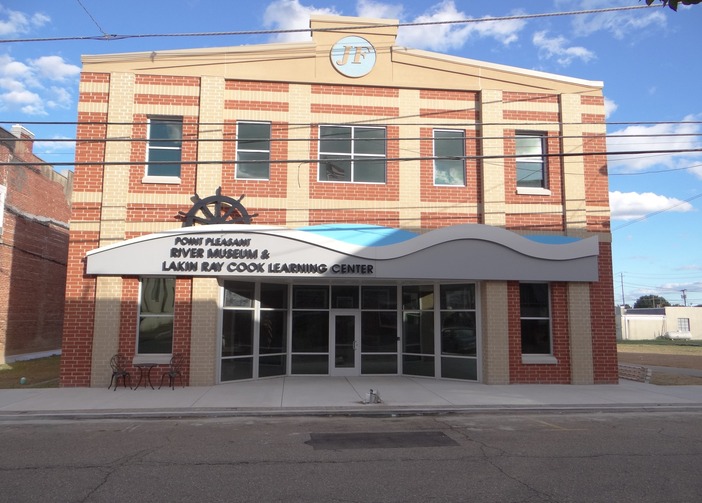Opening times
Tuesday - Saturday
12:00 (noon) - 5 P.M.
Closed Monday
and all federal and state holidays
The Point Pleasant River Museum and Learning Center focuses on river life and commercial enterprise on the Ohio and Kanawha Rivers. The museum has many displays and video demonstrations. Special guests will highlight topics such as great floods, boat construction, sternwheel steamers, river disasters and the local river industry's contribution to World War II. The museum also offers a pilot house simulator, aquarium and a research library.



Life Membership is $500.00. With the Life Membership a member and their spouse will be admitted free to the museum for life. You will receive a certificate of membership, membership ID cards and a copy of the "History of the Marietta Manufacturing Co.".
If you would like to make a donation of artifacts or any memorabilia related to life on or around the Rivers or related to the geographical location, please contact: Mr. James McCormick, Director 304-674-0144 [email protected]
For those interested in becoming a monthly donor please see the link below, your tax deductible donation will help us maintain and grow the River Museum and Learning center and something as small as $5 to $20 a month could make all the difference in the world.
Call TodayIf you have a vehicle sitting around and you are looking for someone to pick it up and put it to good use while you receive a generous tax-deductible donation credit then please donate your working or non-working car, truck, boat, RV, ATV or tractor today!
The bridge was designed by the J. E. Greiner Company and opened to traffic in 1928. It was the first bridge in the nation to use an innovative eyebar-link suspension system rather than a traditional wire-cable suspension. The eyebars were made of high-strength steel, but one of them had a small defect that went undetected during routine inspections.
On the day of the collapse, the bridge was carrying about 300 people and 37 vehicles. At 4:58 p.m., the defective eyebar failed, setting off a chain reaction that caused the bridge to collapse. Thirty-one vehicles plunged into the icy waters of the Ohio River. Twenty-one people survived, but 46 died in the disaster.
The Silver Bridge collapse was the deadliest bridge disaster in modern history. It led to a number of changes in bridge safety regulations, including the establishment of the National Bridge Inspection Program. The bridge was replaced by the Silver Memorial Bridge, which was completed in 1969.
The Silver Bridge collapse is a reminder of the importance of bridge safety. It is also a tragedy that claimed the lives of 46 people. Their memories are honored every year on the anniversary of the collapse

